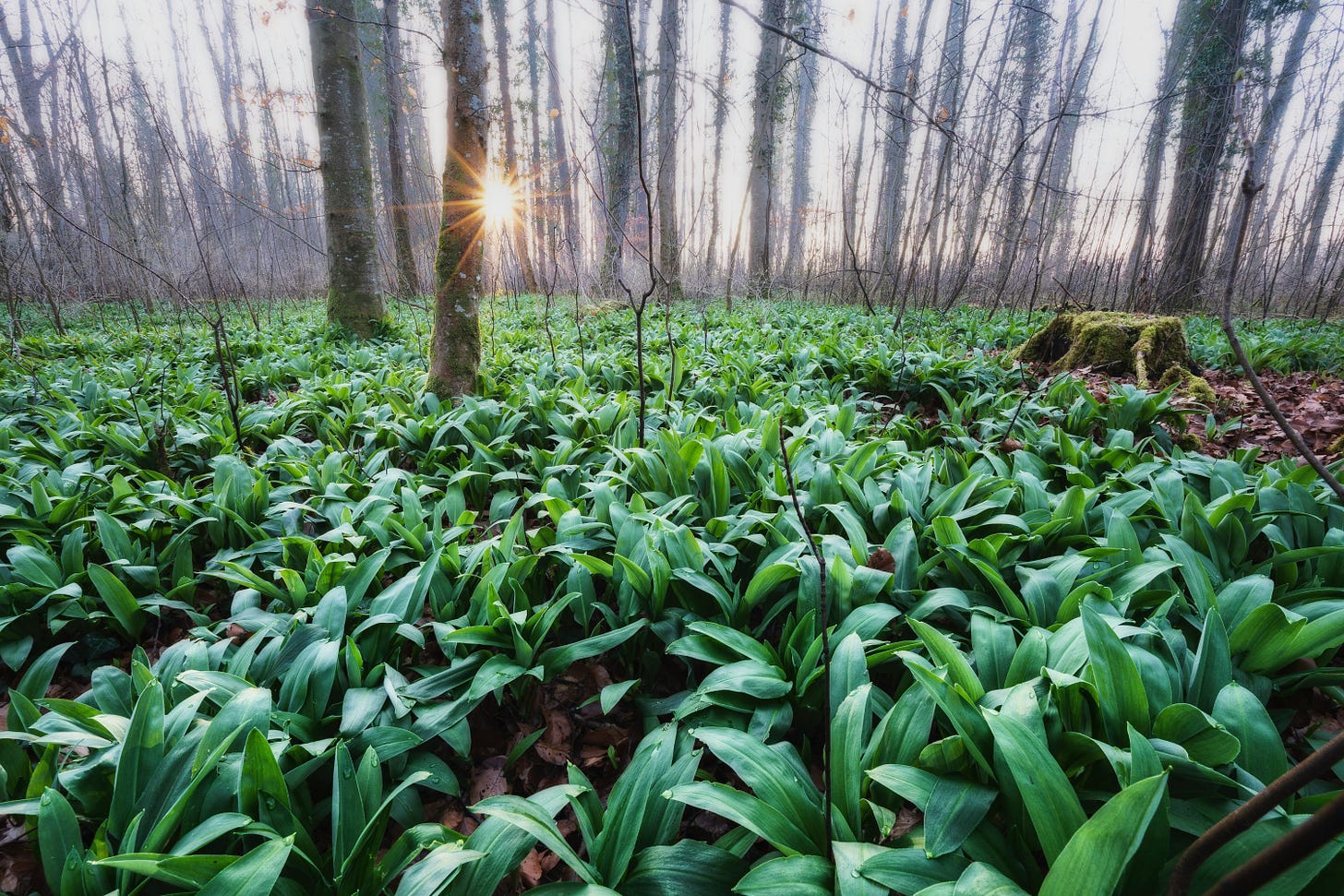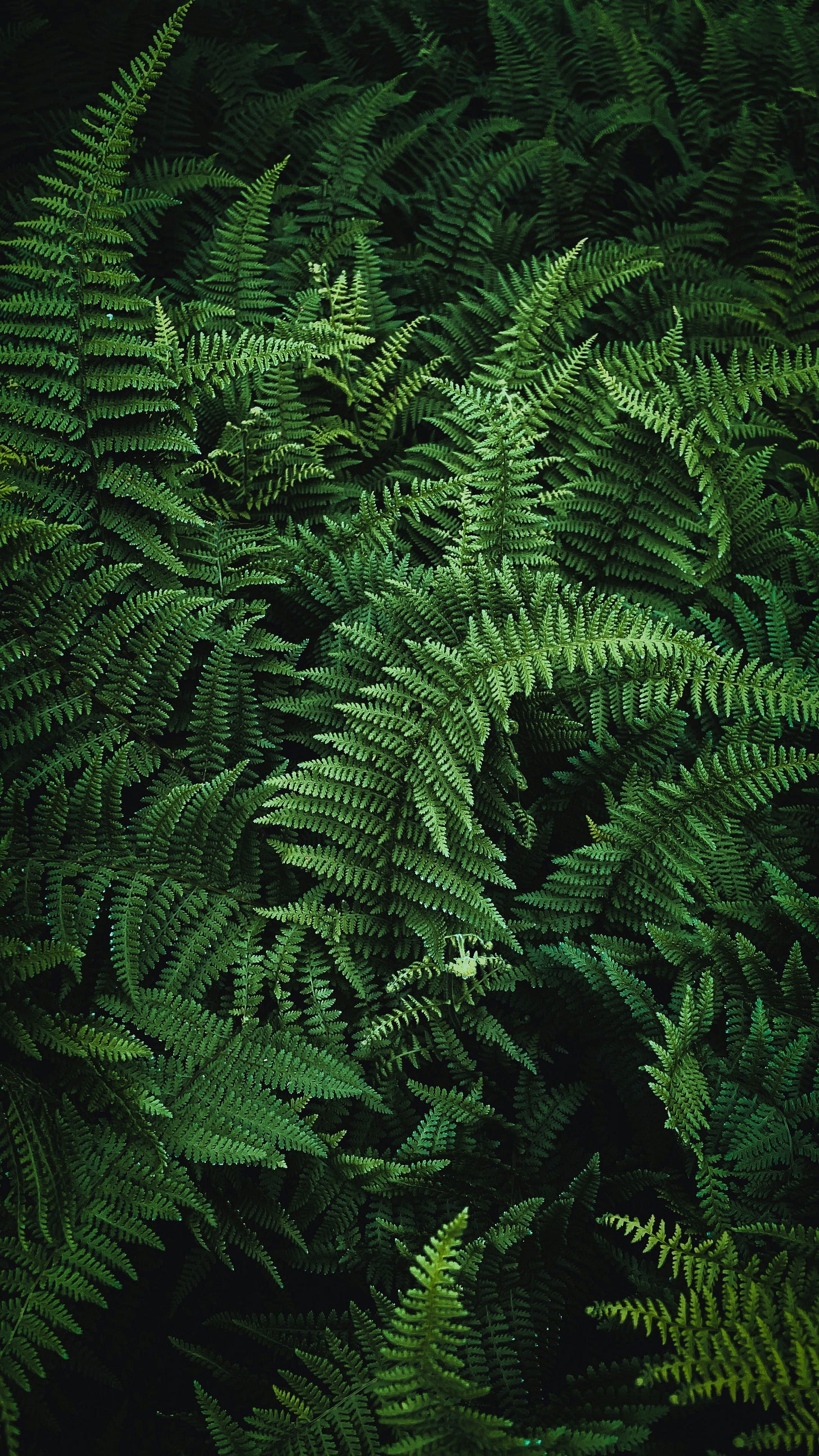Moonworts and Grape-Ferns: Northern Naturalist #20
Adder's Tongue Ferns; How to Have a Great Walk in the Woods; Review of What an Owl Knows: the New Science of the World's Most Enigmatic Birds, plus News and Notes
Moonworts and Grape-Ferns: the Adder’s Tongue Ferns
by Mark White and Dave Benson
Think back to the pleasure of finding even a common spring flower in bloom, especially a tiny one. Then imagine looking for particular plants that are not only small and fairly inconspicuous, but during many years, won’t even show above ground. That’s life when you’re searching for these plants.
Moonworts (genus Botrychium) and Grape-Ferns (genus Sceptridium) are ferns in the Adder’s Tongue Family (Ophioglosaceae). Minnesota has a high diversity of Moonworts and Grape-Ferns. Of the 35 Moonwort species known globally, fourteen occur in Minnesota. There are 25 Grape-Fern species that occur globally; four can be found in Minnesota. Both Moonworts and Grape-Ferns are relatively rare in Minnesota, with some listed as Special Concern, Threatened, or Endangered species.
Moonworts and Grape-Ferns can be difficult to find and identify. Moonworts are typically small in stature and simple in structure, making identification extremely difficult. Both genera are cryptic in nature and may not produce above ground vegetative and or reproductive parts every year and can stay below ground for multiple years. Grape-Ferns are larger with somewhat more complex structures, and the vegetative structure can be highly variable, even within one species.
The Adder’s Tongue family is one of the oldest, most primitive of fern lineages and possesses unique life history traits.
How are these plants different from other ferns? Briefly, the fern life cycle has two stages: the sporophyte which releases spores that can grow into the second stage; the gametophyte. The gametophyte is haploid (one set of chromosomes) and contains both male and female sex organs that mature at different times to foster cross-fertilization. Fertilization results in a new diploid (two sets of chromosomes) plant or sporophyte that we typically recognize as a fern.
In most fern species, the gametophyte grows above ground on the soil surface. In Moonworts and Grape-Ferns, the gametophyte is subterranean and requires a fungal symbiont (partner or cooperator) to provide carbohydrates to grow and develop male and female sex organs. The carbohydrates provided by the associated fungus may be sourced from photosynthetic plants also connected with the fungus. The sporophyte stage which produces aboveground photosynthetic and reproductive structures also forms mycorrhizal (having to do with cooperation between fungi and the roots of a plant) associations with soil fungi that aid in the uptake of water and nutrients. Soil conditions that maintain healthy fungal populations are probably critical to maintaining Moonworts and Grape-Ferns.
Several Moonworts (Goblin Fern, Narrow Triangle Moonwort) and Grape-Fern species (Blunt-lobed Grape-Fern, Cut-leaf Grape-Fern, Leathery Grape-Fern, and Laurentian Grape-Fern) are strongly associated with forested habitats in Minnesota. Regions of North America north of the last glacial maximum (known as the “Wisconsinan”) lack native earthworm populations. Non-native earthworm colonization is leading to profound changes in the soil properties of forested ecosystems. These changes may affect water and nutrient availability for plants and alter soil fungal composition and microbial communities. Non-native-earthworm-induced changes are limiting growth and reproduction for some of the rarer Moonworts and Grape-Ferns, including Goblin Fern, Narrow Triangle Moonwort, and Blunt-lobed Grape-Fern. Logging can also degrade habitats for these species by opening the forest canopy and increasing light levels, along with soil disturbance from logging equipment. Maintaining these rare, unique, and mysterious Moonworts and Grape-Ferns in northern forests requires paying attention not only to landscape-level factors, but also to what’s going on just underneath the surface of the soil.
For more information about these species, a great resource is Ferns and Lycophytes of Minnesota: The Complete Guide to Species Idenification, by Welby Smith (University of Minnesota Press, 2023).
Once you are aware of these rare plants, you can start looking in your patch of the forest. As you can tell from this description of their natural history, it may be unlikely that you’ll find them, but the search will be interesting and enjoyable.
How to Have a Great Walk in the Woods
1 - Have a Goal - I’m not talking about S.M.A.R.T. goals or anything detailed. I’m talking about thinking, “The robins are back; I wonder if there are any new sparrows around?” This is just something to take your mind from thinking about something you left behind indoors to noticing your surroundings outside.
2 - Have No Goal - The goal in Point Number One is not the point. It’s a help. See whatever is there, however unexpected it may be.
3 - Stop and Smell the . . . If it’s roses, great! If it’s fox urine, also great! Use your sense of smell, along with your other senses, to communicate to your brain and body that you aren’t in the office or the gym or online.
4 - Go With a Friend It’s a pleasure (and safer) to share the woods with a companion.
5 - Go Alone You’ll notice more and have a different experience of everything if you are alone and quiet.
6 - Look For Details Rather than seeking a grouse, look for the grouse’s eye; rather than seeking a maple tree, look for the leaf shape on the ground. The whole is an abstraction; you’ll be looking for concrete details. It will help you find more treastures on your walk.
7 - Let it wash over you Don’t get bogged down in the details. Just let your surroundings come to you.
Review of What an Owl Knows: the New Science of the World’s Most Enigmatic Birds, by Jennifer Ackerman, Penguin, 2023.
This is the latest book written by Jennifer Ackerman, who has written a number of good books about birds and other biological topics. This one is a compendium of information about many aspects of the natural history of owls. Chapters include “Making Sense of Owls: Unpacking the Mysteries; What It’s Like to Be an Owl: Ingenious Adaptations; What an Owl Knows: How Wise Are Owls?” and six others.
The book is professionally-published and well-written. Ackerman makes frequent reference to the human fascination with owls, and she weaves back and forth between descriptions of human use of owls as totems and metaphors and the scientific writing that is the core of the book.
Many popular nature books seek to be a combination of somewhat comprehensive coverage of the scientific literature and a compelling narrative at the same time. Sometimes it works and sometimes it doesn’t. I found this book to be interesting, but compelling might be a bit strong in description. It is also a little complicated to re-find information in these books. You’ll need to go to the pertinent chapter and root around until you find it. I understand that it’s an attempt to enhance interest in a technical subject.
Ackerman comments frequently on the fascination of humans with owls. This fascination is a fact. As the author of an owl book (Owls of the North: a Naturalist’s Handbook, now out-of-print), I have seen how the topic draws in readers of a wide variety of interests, in a way that would not be true of thrushes or some other bird group. When my book was new, and I was making appearances to promote it, I attended the International Festival of Owls, the brainchild of naturalist, Karla Bloem, who has grown the festival into the International Owl Center. I was used to speaking at birding groups, where the focus was pretty much exclusively the natural history and identification of the birds in question.
The owl festival, however, was attended by hundreds of people, who drove to the small town of Houston in southern Minnesota. There was certainly a lot of natural history talk there, but there was a lot more: owl crafts, owl-themed baked goods, owl-art, owl games, owl face-painting, etc. I had a vendor booth with my books, and many people stopped to chat and buy books. There were a bunch of attendees who weren’t there for books about owls; they just loved owls and maybe had collections of owl figurines or t-shirts or some other owl-related item. In contrast, I have never heard of an International Thrush Festival, nor even of thrush-themed baked goods.
The title of the book (likely not chosen by Ackerman) uses the phrase, “New Science,” and I suppose that’s relative. The science explained in the book is new in the sense of “information informed by science since the beginning of the industrial age,” but not in the sense of “new in the last 20 years.” Some of it, sure, but not a lot.
If you like owls (and I’ll bet you do), you will enjoy this book.
News and Notes
My good friend, brother-in-law, and frequent birding companion, John Ellis, died last week. As recently as early January, we birded together during the Brrrdathon sponsored by the Friends of Sax-Zim Bog. This was one of many birding competitions we did together (and won!), usually together with some combination of our sons and other friends.
One of my sorrows in the days since he passed is that I realized he will never add another species to his prodigious lists. He finished with his Minnesota state list at the Olympian total of 400 species, one of the 25 highest totals ever. His total in Douglas County, Minnesota of 254 is 18 species ahead of the next highest.
Between hours birding together and hours talking about birding and many other things at family gatherings and visits, I believe that I may have talked more with John than with anyone outside of my most immediate family. I miss him and will miss him. May his memory be eternal.
Speaking of friends, it is a true pleasure to share this issue’s article about rare ferns. The substance of the article, and the expertise to even be able to broach the topic, are provided by Mark White, a consulting botanist who has worked for the Minnesota Department of Natural Resources, the Nature Conservancy, and the Natural Resources Research Institute, among others. Mark and I are old friends. Our kids grew up together, and we talk regularly over coffee or basketball games. Among many things I appreciate about my friendship with Mark, I love being able to ask him questions about plants, and knowing that he will be genuinely interested in that conversation.
Once your eyes are opened to the flush of green life in the understory of the forest, you’ll realize how the trees and these plants work together to give your experiences in the woods a particular feel and memory.
“Between the fern and the old man there has been conversation all their lives. The leaves have spoken to his eyes.” Wendell Berry, in the poem, “The Handing Down.”
Thank you for reading this newsletter!















I'm sorry for you loss, I saw your pictures from the Sax-Zim event and remember that article. Thank you for sharing of his passing with us. All the best, Nick
So sorry for your loss! I’ve spent a lot of time in the woods in the last few years as I’ve dealt with loss in my own life (my 28yo son). It’s given me something to focus on. In other news, the dog required a bath after our woodland wander this morning because owl pellets stink, and he rolled in them!